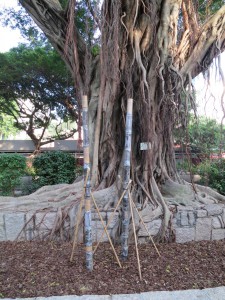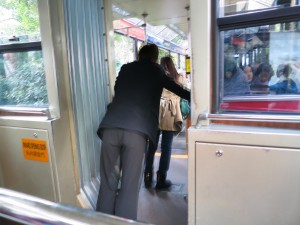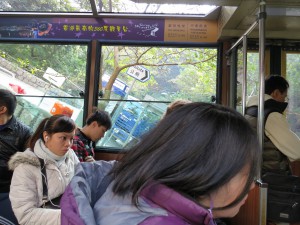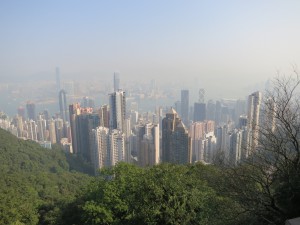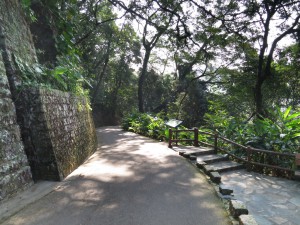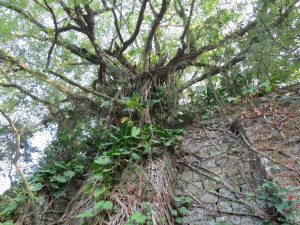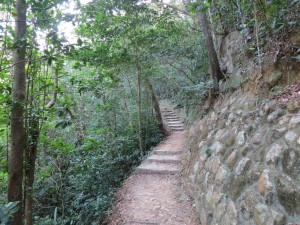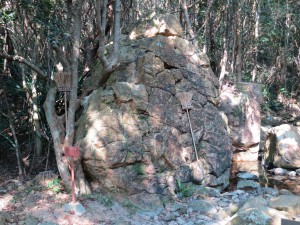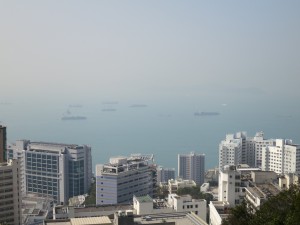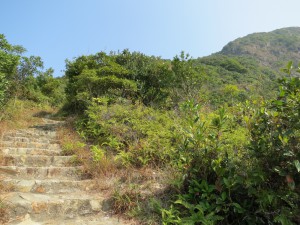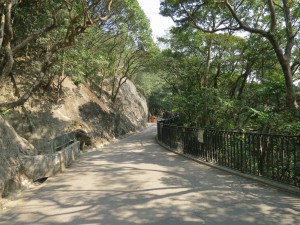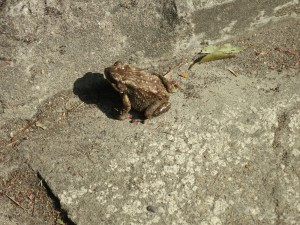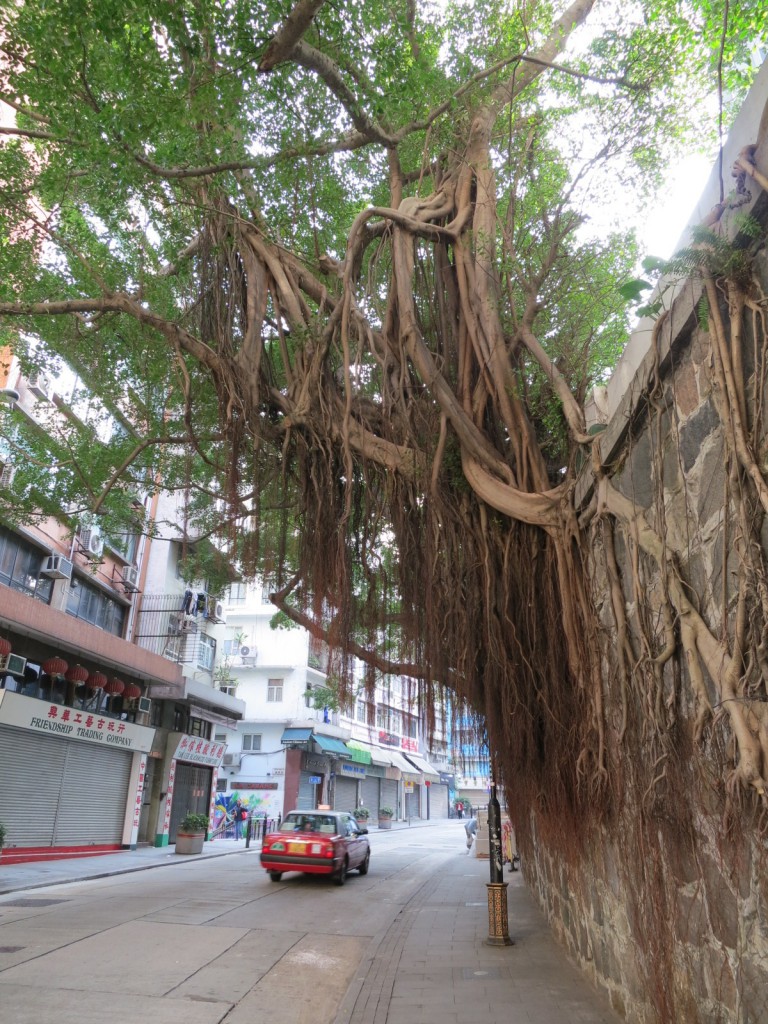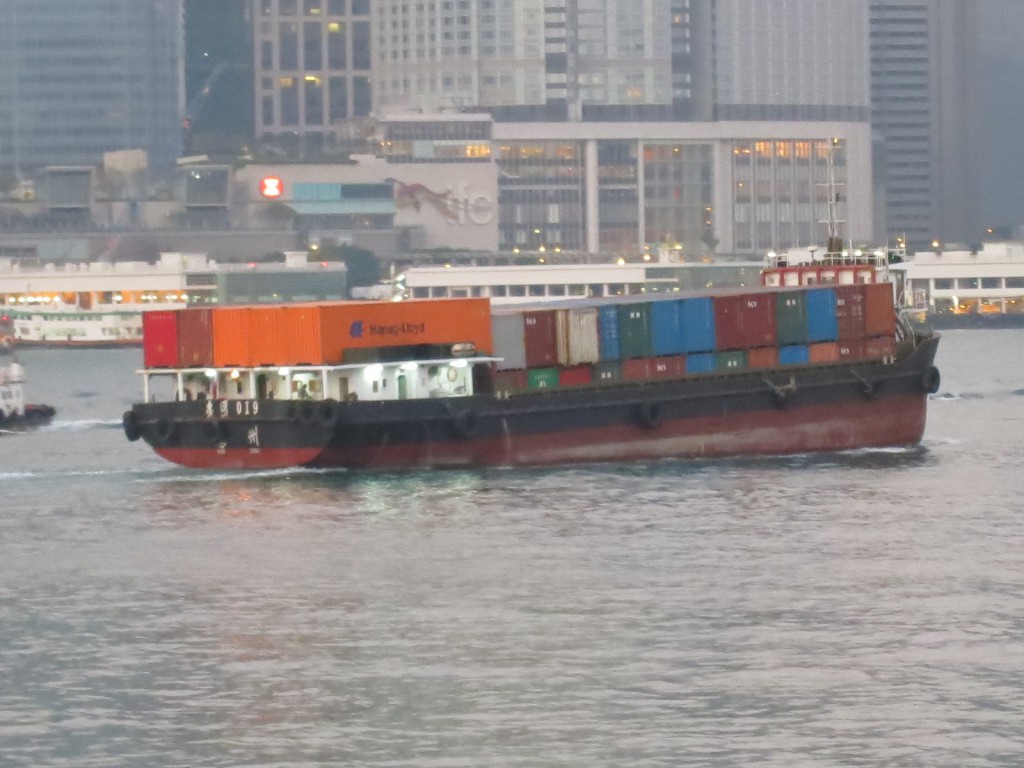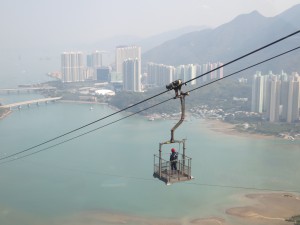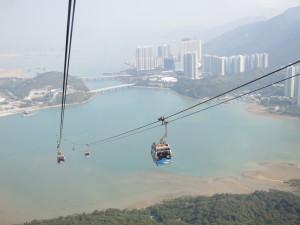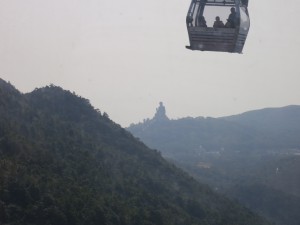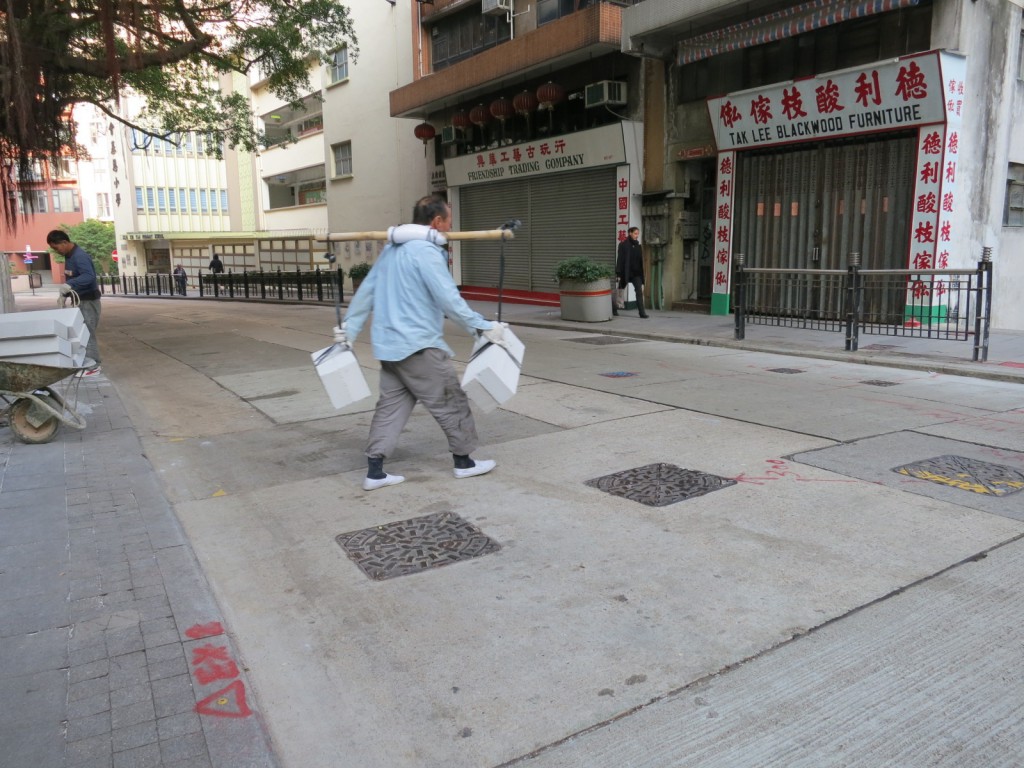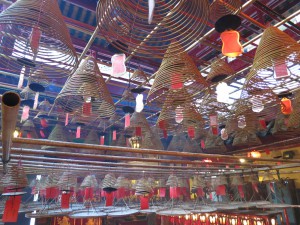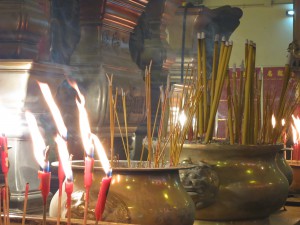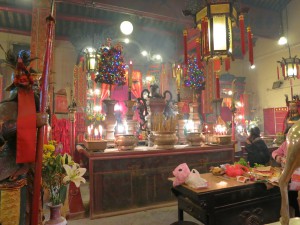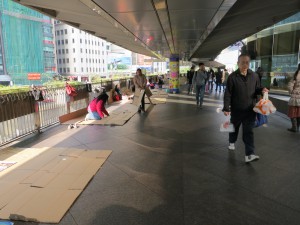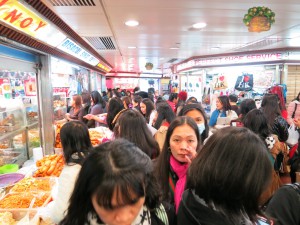I took the hydrofoil to Macau first thing in the morning on December 31. Macau is a former Portuguese colony that’s mostly turned into Las Vegas. The center of town still looks like the old colony, though, with forts and churches and densely packed, beat-up-looking buildings.
The focal point is St. Paul’s cathedral, which burned down in 1835, leaving only the facade.
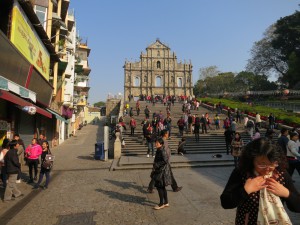
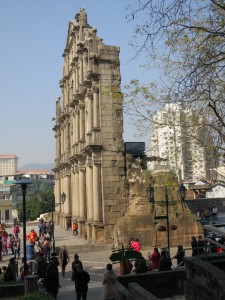
So I got through that pretty quickly.
Adjacent to the church is the main fort of Macau. They’ve put a history museum in the center of it, which is mostly underground.
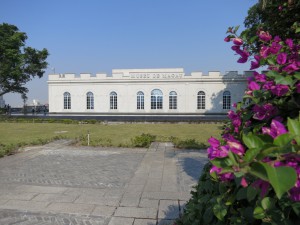
It’s not really a large museum, but it’s nicely done. It covers the early history of China and Portugal, done in parallel, until they converge in the 15th century. Most of the displays are commerce-related, since Macau was concerned mainly with trade and fighting off the Dutch.
The fort is, not surprisingly, on a hill, and has views of the city in all directions through the embrasures.
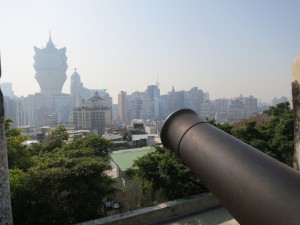
In the center distance, you can see the tip of the Macau Tower, which was modeled after the one in Auckland. I didn’t jump off of it, though, because no one was paying me.
That big flared building at the left is the Grand Lisboa, one of Stanley Ho’s properties. For many years, Stanley Ho was the only casino owner in the territory. Then other casinos started coming to Macau, and he had to start scrambling to compete. Buildings shaped like giant pineapples seem to be a part of that.
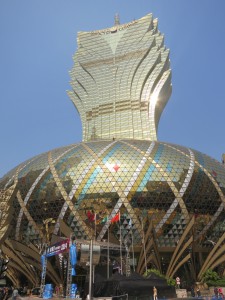
In front of St. Paul’s were several people handing out bright orange bags. The bags said “Jesus loves you,” plus a whole bunch of other stuff in Cantonese. It was getting hot, so I got one to put my sweatshirt in. There were also some pamphlets, but they were in Cantonese too.
Down the hill from the fort and the church facade is a tourist street that seems to get more densely packed as you walk down it, like you’re being squeezed through a funnel.
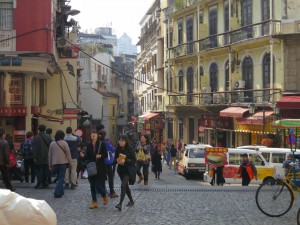
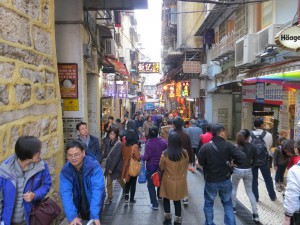
At the bottom of the hill is a plaza with another church. There are a lot of churches in the center of town, and most of them are yellow.
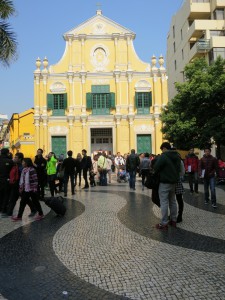
The nicer parts of town were like this: European-style buildings around small plazas.
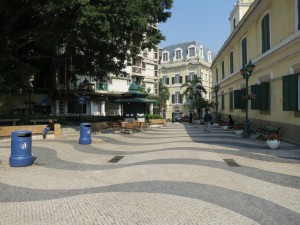
Other parts were less nice.
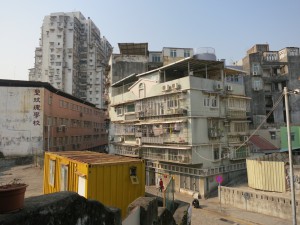
I got lunch at a restaurant that my guide book recommended as a good place to get Macanese food. As it turns out, it was a Portuguese restaurant. The guide book also spelled the name wrong. It was good, though.
I spent another hour or two wandering around with my Jesus Loves You bag, then caught the bus back to the hydrofoil. The hydrofoil trip was uneventful, but I hadn’t considered how many people would be coming into Hong Kong for New Year’s Eve. Pscrillions, that’s how many. It took me an hour and a half to get through immigration.
Oddly, the act of going through immigration again reset the duration of my stay. An American can stay for three months as a visitor, but going to Macau for a day restarts the three months. I wonder how many times you can get away with doing that.
Having spent most of the day standing and walking, I wasn’t very enthusiastic about staying up until midnight to watch the fireworks. I went to bed at 8:30.












